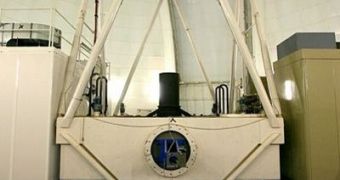The European Space Agency (ESA) has delayed the launching date for its Herschel and Planck observation satellites, so as to give the German Space Operations Center (ESOC) the time they need to debug a newly-installed software. The program is meant to guide the two satellites during their launch and early operation phases, and the agency wants to ensure that everything will go without a hitch. The date, under the new plan, was set to the 29th or 30th of April, two weeks from the original time, April 13th.
ESA officials announced on Friday that ESOC requires more time in order to fully go through the new software, which is apparently critical for the success of the mission. ESA head of science projects, Jacques Louet, said that there is no problem affecting the satellites themselves. The machines are all set to go, and are currently being stored at the agency's launch pad in the French Guyana, South America.
According to the new plans, the complete evaluation of the computer program will be completed on March 27th, which would mean that the teams managing the launch process will have sufficient time to put together the mission by April 30th. Herschel and Planck will be mounted on a single Ariane 5 carrier vehicle, which will hopefully deliver both its payloads safely to orbit. Thus far, this rocket has had very high success rates, as far as launches go, and very few missions have failed on account of the delivery system.
The Hershel-Planck mission is considered to be the most expensive ESA undertaking to date, with the estimated total costs reaching 1.6 billion euro (US$2 billion). For perspective, consider that the Cassini-Huygens mission, launched in 1997, and currently orbiting Saturn and its moons, has a total cost of approximately $3.6 billion. The costs for the European mission include development, construction, the launch itself, as well as operational costs, for when the satellites are in orbit.
On May 28th, the Arianespace launch consortium will have to deliver another payload in space, and the company usually needs about four weeks between launches, in order to guarantee the success of the mission. If Herschel and Planck are delivered to orbit on April 30th, then there's no reason to delay the next flight, which will carry a 6,700-kilogram TerreStar-1 satellite, belonging to SkyTerra Corp.

 14 DAY TRIAL //
14 DAY TRIAL //